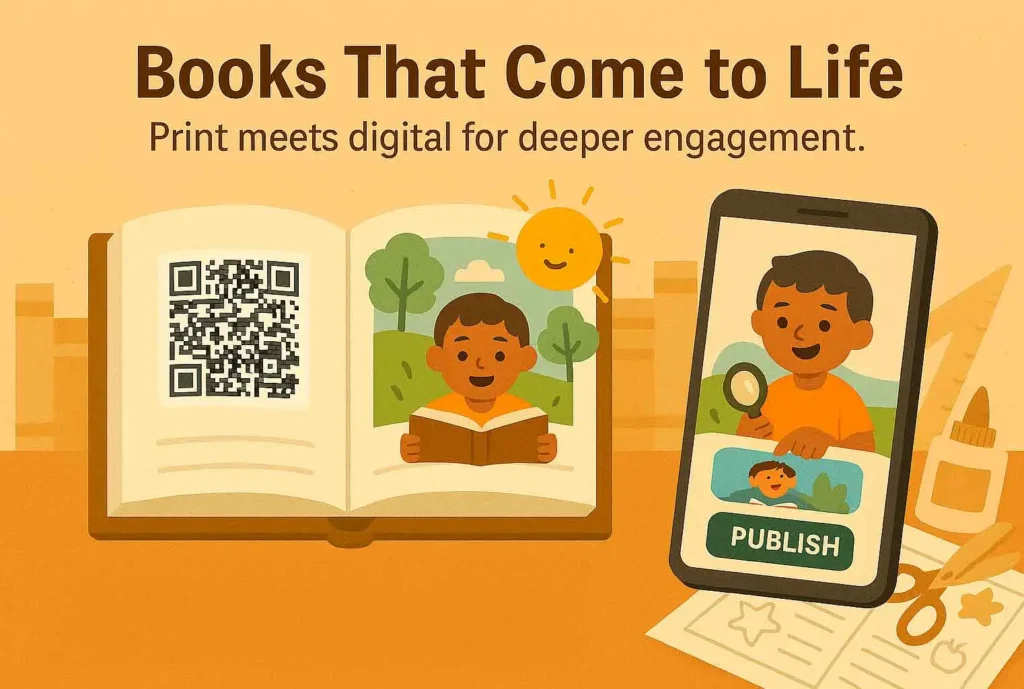In today’s digital world, keeping children engaged with physical books requires creativity and innovation. Interactive children’s books have become increasingly popular for their ability to create immersive reading experiences that compete with screens. By incorporating elements that invite participation, these books transform passive reading into active exploration, helping develop cognitive skills while fostering a love of literature.
This guide explores five proven techniques for creating captivating activity books for kids that will keep young readers coming back for more. Whether you’re an author, illustrator, or creative parent, these strategies will help you design books that educate and engage across various age groups.
Understanding the Value of Interactive Books
Interactive books engage children’s natural curiosity and desire for hands-on experiences. Research shows that interactivity helps develop crucial early literacy skills by improving comprehension through multi-sensory engagement, enhancing focus, developing fine motor skills, building cause-and-effect understanding, and creating emotional connections to reading.
As children interact with books physically, cognitively, and emotionally, they develop a deeper relationship with reading that can foster lifelong learning habits.
Technique 1: Engaging the Senses

Sensory books create multi-dimensional experiences that capture children’s attention through touch, sound, and visual elements. This approach is particularly effective for younger children still exploring the world through their senses.
Incorporating different textures can transform a simple story into an exploration adventure. Fuzzy fabric for animal fur, smooth or rough surfaces, and embossed details all invite touching while helping develop sensory discrimination abilities.
Sound books add another dimension to storytelling. Button-activated sound effects, musical elements, character voices, and nature sounds create memorable associations between stories and auditory experiences.
While all children’s books rely on illustrations, interactive books can take visual storytelling to new levels with color-changing elements, glow-in-the-dark features, 3D pop-up scenes, layered pages, and magnifying windows that highlight small details.
Need professional design for your interactive children’s book? Our Cover Design service can help create visually stunning, age-appropriate book covers.
Technique 2: Incorporating Movement and Action

Books that invite physical participation create active rather than passive reading experiences. Traditional board books can be enhanced with pull tabs that make characters move, spinning wheels that change images, sliders that transform scenes, pop-up structures, and fold-out pages.
Inviting children to physically participate in the story creates investment in the narrative. Pages that require shaking or tilting the book, instructions to count or touch elements, and prompts to make sounds along with characters all blur the line between reader and story, making children active participants.
Stories can be structured around physical actions the child performs, such as following a character’s journey with a finger, tracing patterns that reinforce concepts, or “press here” instructions that seemingly cause effects on subsequent pages. These movement-based elements appeal particularly to kinesthetic learners.
Technique 3: Adding Decision Points and Multiple Paths

Books that offer choices create personalized reading experiences that can be different each time, significantly increasing replay value and reader engagement.
Choose-your-own-adventure-style stories give readers agency within the narrative through decision points that direct them to different pages. Multiple endings based on choices, character selection that affects perspective, and collecting elements throughout the story all help develop decision-making skills and critical thinking.
Personalization makes the reading experience unique to each child. Fill-in-the-blank sections, coloring pages integrated into the story, stickers or movable elements, and spaces for drawing transform the book into a co-created experience that reflects the child’s preferences.
Game mechanics create engaging challenges within books. Hidden object searches, collection challenges, simple puzzles, and achievement systems tap into children’s natural desire for mastery, making reading a rewarding activity.
Ensure your interactive book is properly formatted for print with our Book Formatting & Layout Design service, specially equipped for complex interactive elements.
Technique 4: Integrating Educational Elements

Interactive books provide excellent opportunities to incorporate learning in engaging ways. Educational concepts can be woven seamlessly into interactive experiences through math activities disguised as story problems, science concepts explored through cause-and-effect mechanisms, and vocabulary development through labeled diagrams.
Relatable characters can guide children through learning experiences. Characters who model curiosity, diverse protagonists who introduce cultural concepts, and animal stories that include factual information all help children connect more deeply with educational content when presented through characters they care about.
Interactive books can provide multi-level experiences that grow with the child by including simpler elements for initial readings and more complex layers for subsequent explorations. This approach makes books relevant for longer periods as children develop and discover new aspects with each reading.
Technique 5: Extending Beyond the Page

Modern interactive books often extend beyond their physical form. Print books can be enhanced with digital components like QR codes linking to animated content, augmented reality features, companion apps, digital downloads of additional activities, and online platforms where readers share their interactions.
Books can inspire action beyond the reading session through printable activities extending story themes, recipes or crafts related to the narrative, scavenger hunts inspired by the book, and classroom activities for educational settings.
Some interactive books create shared experiences between readers through mail-in components where readers contribute to future editions, social media challenges, collaborative storytelling prompts, and book club activities. These community elements transform solitary reading into a social experience.
Age-Appropriate Interactive Elements

Different interactive features work better for specific developmental stages:
For infant books (0-2 years), focus on simple, durable elements like rounded board books, high-contrast visuals, simple flaps, texture panels, and mirror elements.
Early readers (2-5 years) benefit from pull-tabs requiring moderate dexterity, sound books with clear buttons, question-and-answer formats, and sensory books with various textures.
Kindergarten stories (5-7 years) can include simple decision points, drawing components, basic puzzles, and more detailed visual storytelling that rewards close observation.
Older children (8-12 years) appreciate sophisticated features like complex puzzles, detailed world-building elements, multi-path adventures, STEM-focused elements explaining science concepts, and historical fiction with interactive timelines.
Our Editing & Proofreading service ensures your interactive children’s book has age-appropriate language and content for your target audience.
Publishing Considerations

Creating interactive books involves unique production challenges. The page layout requires planning space for interactive elements, ensuring mechanisms work properly across page turns, and designing for durability in high-touch areas.
Production costs can be significantly impacted by special materials, complex mechanisms requiring specialized manufacturing, and durability testing essential for safety compliance. Unique book formats may need custom production processes, and electronic components add significant expense.
Publishers have several routes to publish interactive children’s books, from traditional publishers with novelty book experience to specialized printers handling interactive elements. Digital interactive books and print-on-demand options offer different levels of creative control and distribution potential.
Book promotion for interactive titles should highlight unique features through video demonstrations, sample interactions at events, testimonials focusing on engagement, and education-focused marketing for schools and libraries.
Our Publishing on Amazon KDP & Beyond service includes guidance on producing and marketing interactive children’s books.
Conclusion
Interactive children’s books represent a perfect blend of entertainment and education. By thoughtfully incorporating tactile elements, movement, decision points, educational content, and extensions beyond the page, authors can create reading experiences that captivate young audiences.
The most successful interactive books don’t include interactivity merely as a gimmick but as an integral part of the storytelling experience. When interactive elements enhance the narrative, support character development, or reinforce themes, they create a cohesive experience that resonates with young readers.
As you create your own interactive children’s book, remember that the ultimate goal is fostering a love of reading. By making books engaging, personal, and multi-sensory, you’re helping create the next generation of readers who see books not as homework but as adventures waiting to be explored.
Ready to bring your interactive children’s book to life? Contact our team to discuss how our services can support your creative vision.




